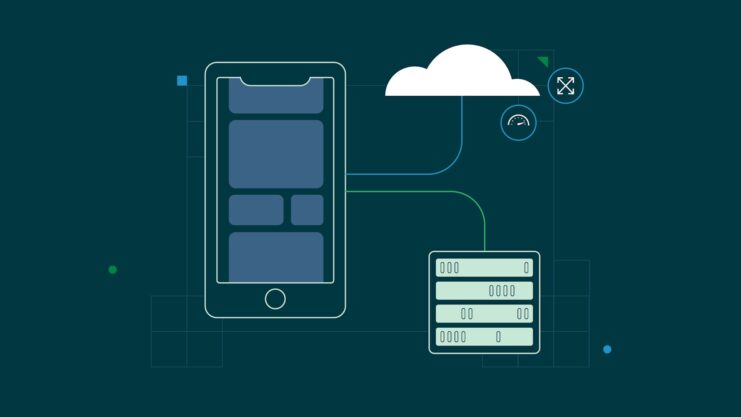Rapid application testing and real device cloud testing have become more crucial than ever before. Nevertheless, testers encounter a variety of challenges, including unreliable testing infrastructure, geographically dispersed testing teams across various cities and countries, the need for continuous testing in agile development processes, and the abundance of diverse testing devices on the market.
Establishing the necessary infrastructure and implementing automated testing demands a substantial investment of both resources and effort. Cloud Mobile Testing involves the utilization of cloud services to construct an immensely scalable testing infrastructure. This cloud-centric mobile testing setup is responsible for hosting real mobile devices (both Android and iOS) or emulators.
What is a Real Device Cloud?

A real device cloud represents a virtualized environment where a diverse array of real devices, encompassing both desktop computers and mobile devices, are harmoniously pooled within a cloud infrastructure. This innovative virtual setting empowers testers, developers, and Quality Assurance (QA) teams to remotely engage with these devices, carrying out tests and assessments that closely mimic real-life user interactions.
What is Cloud-Based Mobile App Testing?
Cloud-based mobile app testing is a solution that enables developers and testers worldwide to collaborate and connect with mobile devices over the internet. In cloud technology, testers gain access to a wide range of devices with varying operating systems, versions, and network carriers, among other attributes. Apps can be uploaded to the cloud either through APIs or web clients.
With cloud technology, testing teams can conduct a wide range of tests, including functional testing, stress testing, phone model testing, OS version testing, load testing, UI testing, and assessments of bandwidth and latency. In terms of testing environments, device clouds (or mobile testing environments) offered through cloud technology are both numerous and diverse. In addition to testing on real mobile devices, testers can also evaluate their applications on virtual machines, such as simulators and emulators.
While emulators mimic most of the hardware and software features of the production environment, simulators primarily replicate the software variables and configurations but not the actual hardware that will host the application in production.
Why Is Cloud Mobile Testing Important for Businesses?

Businesses must ensure that any software bearing their name provides a flawless user experience for all users. The reputation and revenue of a business depend on the quality and performance of its software in today’s digital era.
Moreover, enterprise-level applications are intricate and require ongoing testing to deliver a high-quality product. This can only be accomplished by using a dedicated testing infrastructure that enables thorough testing at any given time.
The adoption of a cloud-based mobile testing platform for businesses is a practical solution to address these challenges. It allows teams of various sizes to test software on a variety of devices using a single testing plan.
Advantages of Cloud Mobile Testing
Here are some of the advantages that result from Cloud-Based Mobile Application Testing:
- Enhanced User Device Variety: End-users have access to a range of devices, OS platforms, and display densities, which in turn reduces the overall infrastructure and maintenance expenses.
- Parallel Testing Support: Cloud-based testing allows for parallel testing, resulting in significant time savings.
- Secure Testing Environment: Apps can be tested in a secure and controlled environment.
- Accessibility Anywhere: Both developers and QA professionals can access the tools from anywhere, providing flexibility and convenience.
- Test Result Recording: Cloud testing supports the recording of test results for thorough analysis.
- Constant Availability: Cloud-based testing is readily available at all times, ensuring uninterrupted testing.
- Real-Time Testing Environment: Testing can be conducted in a real-time environment with actual network carriers.
- Cost Efficiency: Cloud testing operates on a pay-per-user basis, offering cost-efficiency and scalability.
Determining the Need for Cloud Testing vs. Non-Cloud Testing

Cloud Testing Required:
Target Audience:
Stress, penetration, and load testing are crucial due to the large user base, and manual testing of all aspects would be impractical.
Operating System Version Testing:
Apps that are native and closely tied to specific operating systems or versions require regression testing across different OS versions.
A diverse test bed with various OS versions is advisable, making cloud testing a suitable choice.
Phone Model Screen Size Testing:
Apps featuring flashy UI or imaging elements, like gaming and travel apps, should be tested on various screen sizes and phone models.
Building such test environments would be costly, making cloud testing a cost-effective solution.
Cloud Testing Not Required:
Target Audience:
These are apps designed for specific users or a limited audience and are not intended for a global user base. Usage may be limited to a few thousand users, such as CRM or intranet apps for company users. Stress testing is needed, but extensive cloud-based testing tools may not be necessary.
Operating System Version Testing:
Web apps, by nature, behave consistently across different OS versions, reducing the need for regression testing. Hybrid apps may require some OS version testing but not complete regression against every version.
Phone Model Screen Size Testing:
Apps without complex UI elements or features that vary with phone models do not require testing across all screen sizes or phone features. Cloud-based testing may not be cost-effective for such apps.
Implementation of Mobile Cloud Testing

Integrating cloud mobile testing into your project is not a daunting task. Your implementation plan should include the following details:
- Parameters of Your AUT (Application Under Test) for Cloud Testing:
Identify criteria for apps suitable for cloud testing, such as those with large target audiences requiring extensive performance tests or complex UI and imaging features, or native mobile apps.
- Prerequisites for Your Cloud Testing Platform:
Consider supported testing frameworks, mobile environments, automation tools, and other essential factors.
Selection of Cloud Platforms
Cloud-based AI-powered test orchestration and execution platformcaters to testers of all skill levels and are scalable for projects of any size.
Platform provides a cloud-based platform which offers an extensive and diverse array of devices, providing users with instant access to over 3000 real desktop and mobile environments.
This remarkable device range ensures that your testing endeavors encompass a wide spectrum of scenarios, facilitating thorough and comprehensive test coverage. With such a rich diversity of devices at your disposal, you can confidently assess the functionality and compatibility of your web applications or websites across various platforms, browsers, and screen sizes, ultimately delivering a seamless and user-friendly experience to your audience.
- Proof of Concept (POC) for Cloud Implementation:
While a mobile testing strategy leveraging the cloud offers agility and scalability, it’s advisable to develop a well-detailed plan with optimization points. For example, consider employing a parallel testing approach, which leverages the cloud’s strength in running virtually unlimited tests concurrently.
Challenges and Aspects to Consider in Cloud Testing:

While embracing cloud testing offers numerous advantages, organizations should be mindful of the challenges and aspects that accompany it. Below are key challenges and guidance on how to address them effectively:
- Data Security: One of the foremost concerns in the adoption of cloud testing is the security of data. It is imperative for organizations to ensure that their sensitive and confidential data remains safeguarded during the testing process. To tackle this challenge, selecting a dependable cloud testing provider with robust security measures is essential. Seek out providers that implement encryption, stringent access controls, and compliance with industry standards. Conduct thorough due diligence, scrutinizing the provider’s security certifications and practices before making a decision.
- Migration and Integration: The process of migrating existing testing practices and seamlessly integrating them into a cloud environment can be intricate. This endeavor demands meticulous planning, coordination, and specialized expertise. Considerations encompass the migration of test cases, test data, test environments, and test scripts to the cloud.
To surmount this challenge, organizations should devise a comprehensive migration plan. This plan should include the identification of dependencies, the assurance of data integrity, and the establishment of seamless integration with other systems and tools. Collaborate closely with the chosen cloud testing provider to facilitate a smooth and effective transition.
- Simulation: The ability to simulate real-world environments and conditions is pivotal in achieving comprehensive and accurate testing results. However, replicating realistic simulations within the cloud can be demanding.
Organizations must ensure that the cloud testing environment faithfully mirrors the intended production environment, encompassing elements such as network conditions, user loads, and device diversity. Collaborate closely with the cloud testing provider to configure the test environment accurately, leveraging their expertise in simulating authentic scenarios.
- Reliability and Performance: When relying on a cloud testing provider, organizations must thoroughly assess the provider’s reliability and performance. Downtime or delays in test execution can have adverse effects on project timelines and deliverables. Hence, it is critical to opt for a reputable and dependable cloud testing provider with a proven track record.
Evaluate the provider’s service level agreements (SLAs), uptime guarantees, and customer feedback. Conduct performance tests to gauge the provider’s ability to efficiently handle high volumes of testing activities.
Conclusion
Cloud technology, when harnessed effectively, consistently delivers convenience and transparency across various industries. The cloud’s inherent capacity for online storage and computation offers remarkable flexibility, consolidating all your data in a single location while necessitating only a WiFi connection for access. Consequently, businesses and developers should consider integrating cloud mobile testing into their development workflow to maintain a competitive edge in the market.

